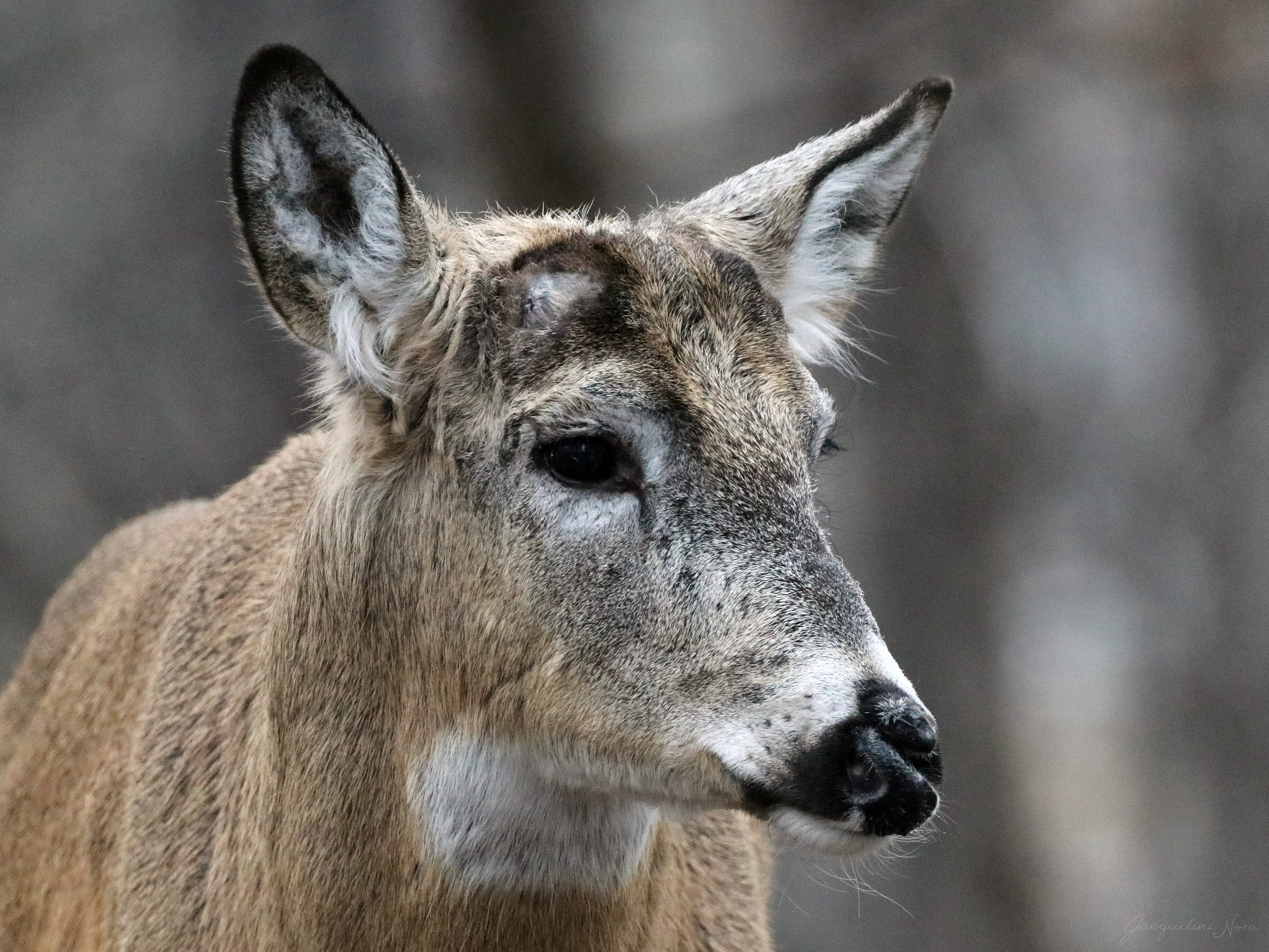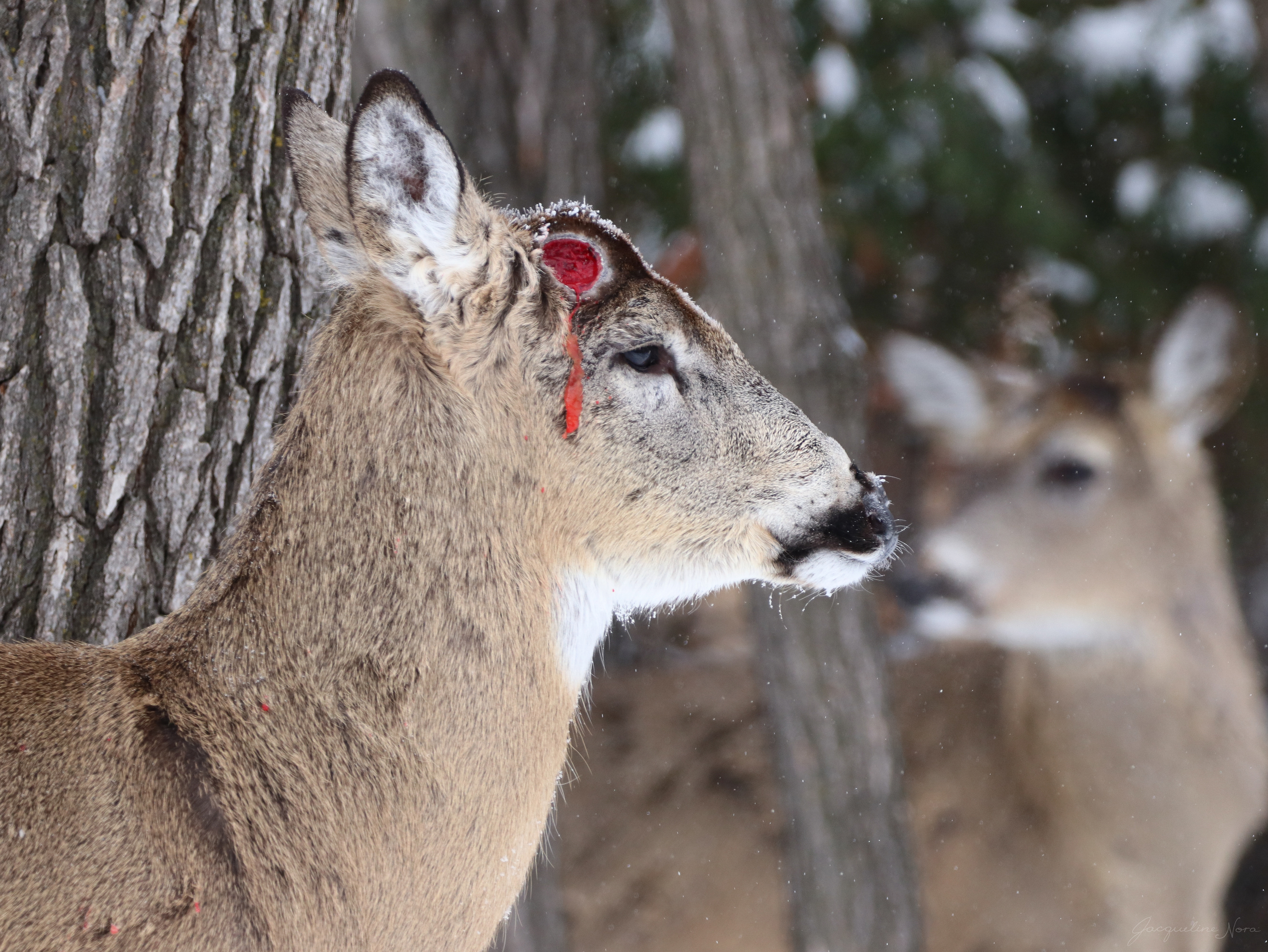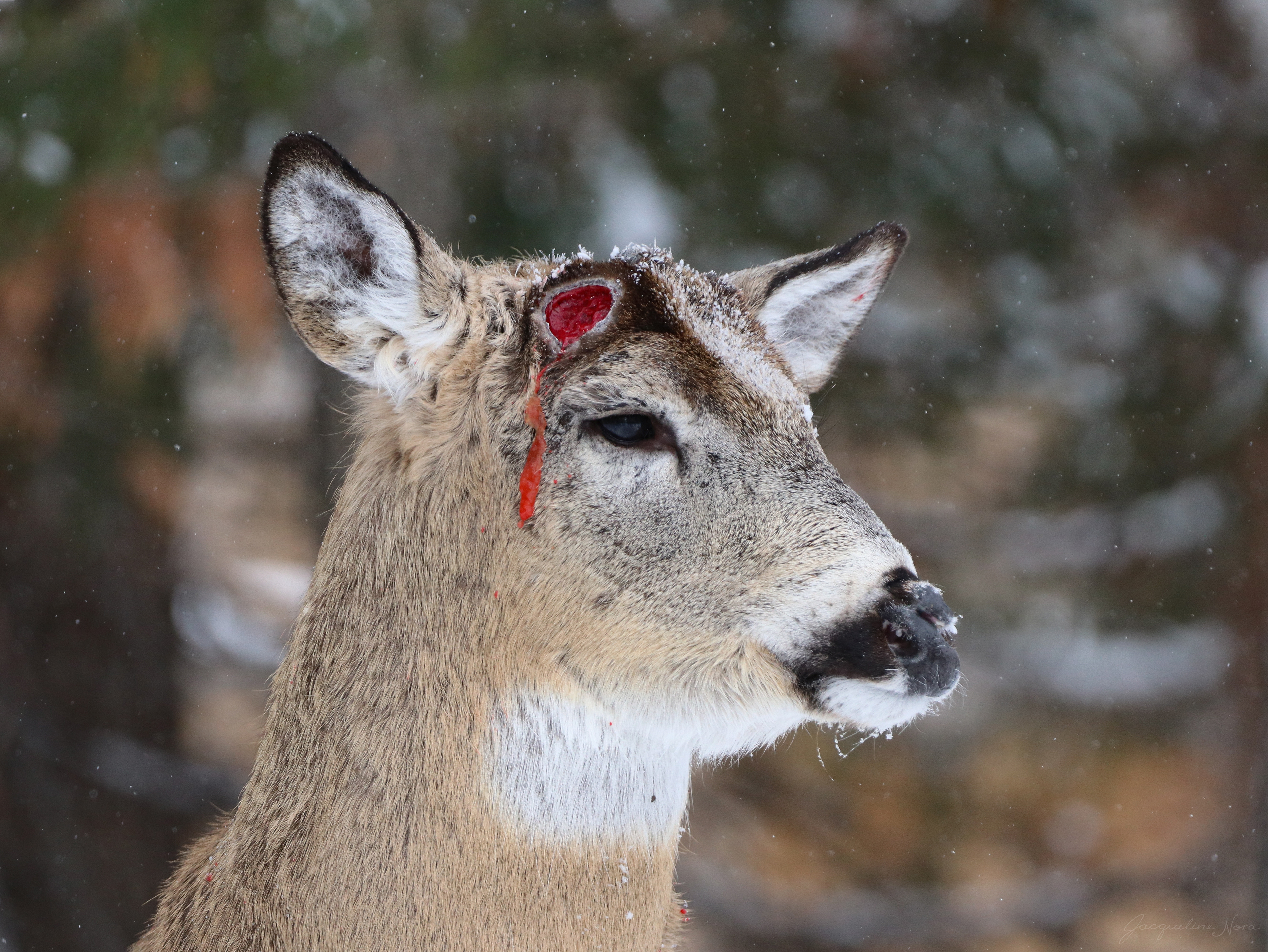This whitetail buck was a regular visitor to my Dad’s property and one that I grew to feel a special connection with. Through our time together he gave me the opportunity to observe and document every stage of an antler's life cycle.
At the start of 2021 I had first noted 'Gnarly Nose', lovingly named for his unusual nose.
I never knew how he came to get the distinct mark, nonetheless he soon became a regular and a favourite.
When we first met he was at his most handsome, sporting an impressive rack and a thick winter coat.
Over that first season I had many encounters with him. For a time they were so frequent that I would more or less expect him anytime I was around, and if he wasn’t around, I usually knew where to look.
Once that season’s rut had come to an end, Gnarly still hung around, just less frequently and looking a bit different without his big rack.


As the new spring changed to summer I saw him much less often but still caught a few glimpses of him as he grew his new set of antlers.
Then I caught him on the day he started to shed his velvet.
I thought I couldn’t get anymore lucky in my timing with him but just after the rut in 2022 I got a call from my Dad ...
... He thought it looked as one of the deer visiting his yard might be bleeding.
On arrival I was relieved (and thrilled) to find out it was a buck that freshly dropped his rack. Not only that, it was my most fond visitor, Gnarly.




Because his exposed pedicles were so fresh I knew his antlers had to be close, so I set out looking.
It didn't take long, I found them only a few dozen feet away.
Both antlers were within arms reach of each other in the melted snow where Gnarly had spent the night bedded down. Weighing in at just over four pounds they ended up being the last rack he’d ever drop.
The next time I came across him he was lying in a ditch alongside a busy roadway, his growing antlers already looking like they would have turned out more impressive than the last...
The Antler Shedding Process At A Glance:
Note the different stages of healing on each deer's shed pedicle
Antler shedding is a natural process a buck undergoes every year, in which the antlers are dropped off so they can be replaced for the next breeding season.
Although there is a cost of energy to grow a new rack each year, a normal set of adult antlers can weigh up to nine pounds and is not needed outside of breeding season so dropping them helps in conserving energy.
In the spring antlers begin to grow from a spot called a pedicle. The first year a buck grows antlers they aren’t much more than small bumps, but they start to grow back larger each year as the deer ages.
. . . . .
As antlers grow they are covered in a soft, blood rich membrane known as ‘velvet’. In the late summer/early autumn, shortly before breeding season the velvet is shed. It can look gruesome but does not harm or hurt the deer. The velvet is sometimes even seen as a nutritious snack and eaten by the deer as its being shed off. Once the velvet is gone the antlers are finished growing and are used to assert dominance during the rut.
. . . . .
After the season ends, a drop in testosterone signals the pedicle’s connection to the antlers to weaken. This is what causes them to drop off. By this time, the main blood supply has already died off so blood loss is notable but not significant. Over the next day or two the pedicles scab over and the process soon starts all over again. Each year the growth will be larger until the buck reaches his peak, usually at around 5-7 years of age. The years following will see shrinkage in size but often they keep a similar shape.